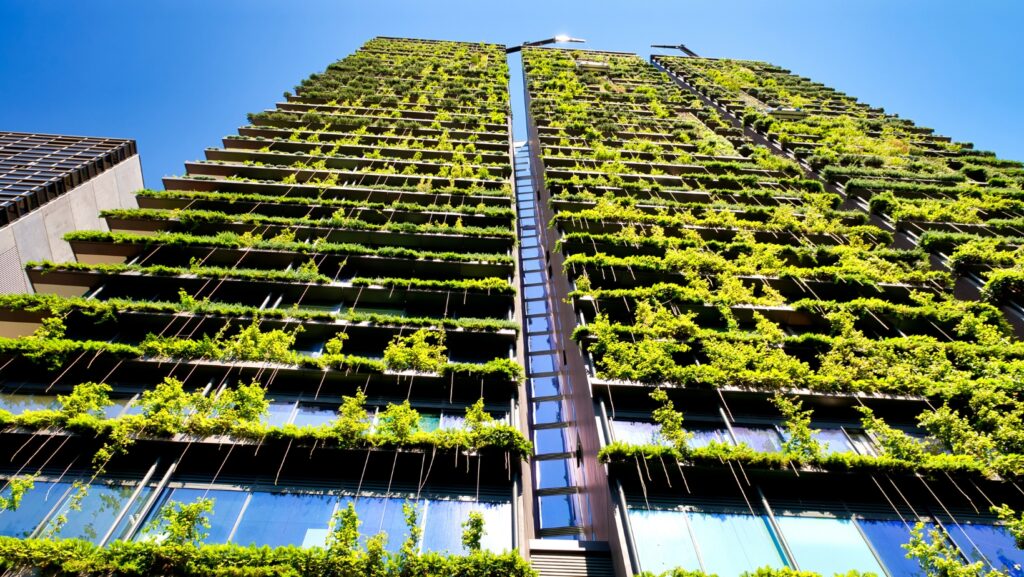Green architecture, also known as sustainable architecture, has become a major trend in the field of design and construction. But what is it that has prompted this shift towards more environmentally-friendly practices? In this article, I’ll be exploring the factors that have driven the rise of green architecture and why it has become such a popular choice for architects and homeowners alike.
One of the primary drivers behind the emergence of green architecture is the increasing awareness of the impact that traditional construction methods have on the environment. From excessive energy consumption, check texas electricity price forecast 2024, to the depletion of natural resources, it has become clear that our current way of building is simply not sustainable in the long run. As a response to these challenges, green architecture seeks to minimize the negative environmental effects of buildings by incorporating innovative design strategies and utilizing eco-friendly materials.
Definition of Green Architecture
Benefits of Green Architecture
Green architecture, also known as sustainable architecture, is largely a response to the growing concern for environmental sustainability. It is a design approach that focuses on creating buildings that minimize their negative impact on the environment and maximize their benefits to both occupants and the surrounding ecosystem.
One of the key benefits of green architecture is the reduction of carbon emissions. By utilizing sustainable materials and implementing energy-efficient systems, green buildings significantly reduce the amount of greenhouse gases produced during construction and operation. This not only helps combat climate change but also contributes to improved air quality and human health.
Principles of Green Architecture
Green architecture is guided by several principles that drive the design and construction process. These principles include:
- Sustainable site planning: Green buildings are designed to minimize their impact on the surrounding environment. This involves considerations such as preserving natural habitats, reducing stormwater runoff, and promoting biodiversity.
- Energy efficiency: Green architecture emphasizes the use of energy-efficient technologies and design strategies to reduce energy consumption. This includes utilizing renewable energy sources, optimizing insulation, and incorporating passive design techniques to maximize natural heating and cooling.
- Water conservation: Green buildings incorporate water-saving measures to reduce water consumption. This includes implementing efficient plumbing fixtures, utilizing greywater recycling systems, and promoting the use of native and drought-tolerant landscaping.
- Materials selection: Green architecture prioritizes the use of sustainable and locally sourced materials with low environmental impact. This involves considering factors such as material life cycle, resource depletion, and waste generation.

To What is Green Architecture Largely a Response
Climate Change
Climate change is one of the primary concerns to which green architecture is largely a response. Rapid industrialization and the burning of fossil fuels have significantly contributed to the increase in greenhouse gas emissions, leading to global warming. As a result, rising temperatures, extreme weather events, and sea-level rise have become a serious threat to our planet.
Green architecture addresses climate change by incorporating sustainable practices that reduce carbon emissions and minimize the environmental impact of buildings. Some key strategies include:
- Energy-efficient design: Green buildings prioritize energy efficiency, using techniques like efficient insulation, high-performance windows, and advanced HVAC systems. These measures reduce the demand for energy and lower carbon emissions.
- Renewable energy sources: Implementing renewable energy systems like solar panels and wind turbines on buildings helps in generating clean power and reducing reliance on fossil fuels.
- Passive design: Passive design techniques, such as optimizing building orientation and using natural ventilation, reduce the need for energy consumption, further reducing carbon emissions.
The adoption of green architecture is crucial in combating climate change, as it can significantly contribute to the global effort to reduce greenhouse gas emissions and create a more sustainable future.
Resource Depletion
Resource depletion is another key environmental concern that green architecture addresses. Traditional construction and building practices heavily rely on the extraction of raw materials, leading to the depletion of natural resources. Green architecture aims to combat this issue through various strategies:
- Materials selection: Green buildings prioritize the use of sustainable and environmentally-friendly materials. This includes reusing and recycling materials, as well as choosing materials with a low environmental impact, such as sustainably harvested wood and recycled concrete.
- Water conservation: Green architecture incorporates water conservation techniques, such as efficient plumbing fixtures and systems, rainwater harvesting, and greywater recycling. These strategies help in reducing water consumption and conserving this valuable resource.
- Waste reduction: Green buildings prioritize waste reduction and recycling during the construction process. By implementing on-site waste management systems and encouraging the use of recycled materials, green architecture minimizes the amount of waste sent to landfills.
By focusing on resource conservation and employing sustainable practices, green architecture helps in reducing the strain on natural resources and promotes a more sustainable and responsible approach to building design and construction.


More Stories
Path of Exile 2 Is Coming: Why It Might Be the Most Technically Ambitious ARPG Yet (and How to Prepare)
Complete Guide to Online Casino Verification Processes
The Ideal AI Video Generator for Gaming: Create Engaging Content Fast